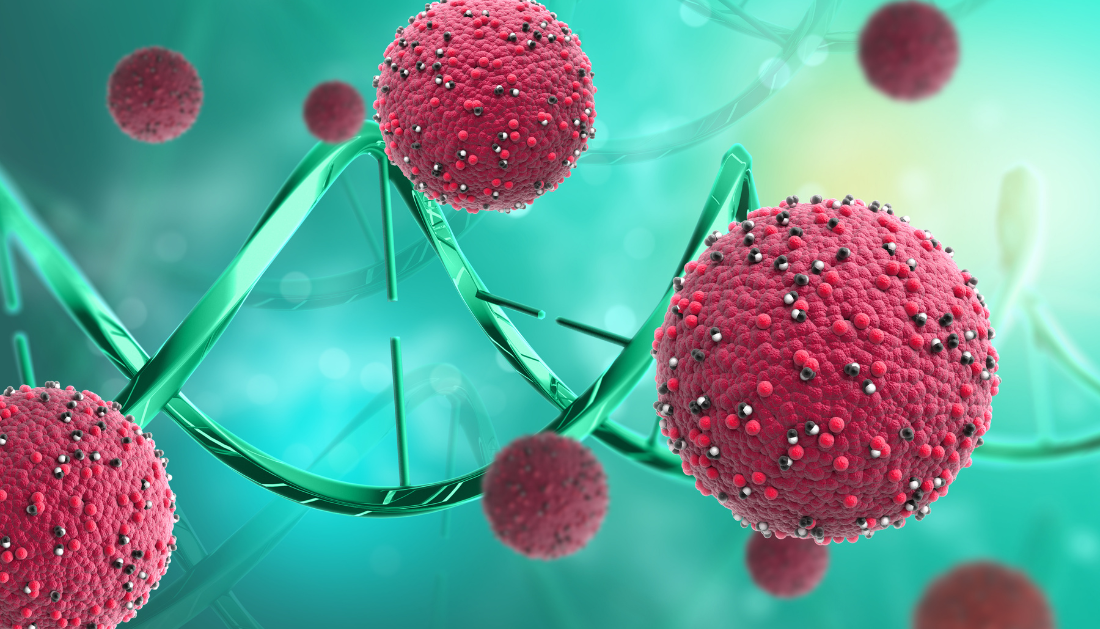

Cleveland Clinic researchers have uncovered a fundamental mechanism for Kaposi’s sarcoma-associated herpesvirus (KSHV), also known as human herpesvirus 8 (HHV8), to cause cancer. The findings suggest promising new therapy options for KSHV-related cancers such as Kaposi’s sarcoma, primary effusion lymphoma and HHV8-associated multicentric Castleman disease.
“Our findings have significant implications: viruses cause between 10% to 20% of cancers worldwide, a number that is constantly increasing as new discoveries are made. Treating virus-induced cancers with standard therapies can help shrink tumors that are already there, but it doesn’t fix the underlying problem of the virus,” stated Jun Zhao, Ph.D., of the Cleveland Clinic Florida Research & Innovation Centre.
“Understanding how pathogens transform a healthy cell into a cancer cell uncovers exploitable vulnerabilities and allows us to make and repurpose existing drugs that can effectively treat virus-associated malignancies.”
The Nature Communications study, led by Dr. Zhao, finds that KSHV manipulates two human enzymes, CDK6 and CAD, to change how human cells make new nucleotides—the building blocks of DNA and RNA—and process glucose. The changes in how infected cells grow and how KSHV persists increase the probability of tumor formation and play an important role in cancer development.
The researchers demonstrated that the virus triggers a specific mechanism that drives cell metabolism and growth. In preclinical models, inhibiting this mechanism with FDA-approved breast cancer medicines lowered KSHV replication, stopped lymphoma progression, and shrank existing tumors.
KSHV, like other herpesviruses, generally causes no symptoms and stays in the body after primary infection. The virus remains dormant, inhibited by the immune system. KSHV, on the other hand, can reactivate when immunity is compromised, such as in the elderly, HIV/AIDS patients, and transplant recipients. In these high-risk people, the newly active virus can cause aggressive malignancies.
KSHV-induced tumors are rapidly developing, aggressive, and difficult to treat. KSHV affects an estimated 10% of people in North America and Northern Europe, however, the prevalence varies around the world. More than half of people in parts of northern Africa are thought to have the virus. Experts believe these percentages are greater, as KSHV frequently goes undetected due to a lack of symptoms. These discoveries have significance beyond KSHV; researchers can apply their knowledge of KSHV to other cancer-associated viruses that may employ a similar pathway to generate cancer.
Dr. Zhao worked with Michaela Gack, Ph.D., Scientific Director of the Florida Research & Innovation Center, to better understand the cells’ metabolic processes in order to identify the virus’s vulnerabilities.
Rapidly reproducing cancer cells alter metabolism to fuel growth. Meanwhile, most viruses are unable to generate energy or the required chemicals on their own, so they rely on human cells to do the work. The team discovered that the virus takes over the host proteins CDK6 and CAD, enabling infected cells to make additional metabolites, allowing the virus to replicate faster and the cells to grow out of control.
The researchers gave pre-clinical models a CDK6-blocking medicine, Palbociclib, an FDA-approved breast cancer therapy, as well as a molecule that targets CAD. They saw significant reductions in tumor size and increases in cancer survival rates: most tumors vanished after about a month of treatment, and the remaining cancers were reduced by approximately 80%. Select lymphoma cell lines now have a 100% survival rate.
Dr. Zhao and his team are aiming to better understand the links between KSHV, the CDK6/CAD pathway, and cancer development. They intend to use the insights they gain to apply and refine their experimental drug combinations for clinical trials.
“Both viruses and cancers could hijack cellular metabolism for pathogenesis,” Dr. Zhao said. “By investigating these metabolic rewiring mechanisms, we aim to find the Achilles’ heel of cancer-causing viruses and non-viral cancers. I’m excited to see what the future of this work holds.”
More information: Quanyuan Wan et al, Hijacking of nucleotide biosynthesis and deamidation-mediated glycolysis by an oncogenic herpesvirus, Nature Communications (2024). DOI: 10.1038/s41467-024-45852-5
more recommended stories
 Silica Nanomatrix Boosts Dendritic Cell Cancer Therapy
Silica Nanomatrix Boosts Dendritic Cell Cancer TherapyKey Points Summary Researchers developed a.
 Vagus Nerve and Cardiac Aging: New Heart Study
Vagus Nerve and Cardiac Aging: New Heart StudyKey Takeaways for Healthcare Professionals Preserving.
 Cognitive Distraction From Conversation While Driving
Cognitive Distraction From Conversation While DrivingKey Takeaways (Quick Summary) Talking, not.
 Fat-Regulating Enzyme Offers New Target for Obesity
Fat-Regulating Enzyme Offers New Target for ObesityKey Highlights (Quick Summary) Researchers identified.
 Spatial Computing Explains How Brain Organizes Cognition
Spatial Computing Explains How Brain Organizes CognitionKey Takeaways (Quick Summary) MIT researchers.
 Gestational Diabetes Risk Identified by Blood Metabolites
Gestational Diabetes Risk Identified by Blood MetabolitesKey Takeaways (Quick Summary for Clinicians).
 Phage Therapy Study Reveals RNA-Based Infection Control
Phage Therapy Study Reveals RNA-Based Infection ControlKey Takeaways (Quick Summary) Researchers uncovered.
 Pelvic Floor Disorders: Treatable Yet Often Ignored
Pelvic Floor Disorders: Treatable Yet Often IgnoredKey Takeaways (Quick Summary) Pelvic floor.
 Urine-Based microRNA Aging Clock Predicts Biological Age
Urine-Based microRNA Aging Clock Predicts Biological AgeKey Takeaways (Quick Summary) Researchers developed.
 Circadian Control of Neutrophils in Myocardial Infarction
Circadian Control of Neutrophils in Myocardial InfarctionKey Takeaways for HCPs Neutrophil activity.

Leave a Comment